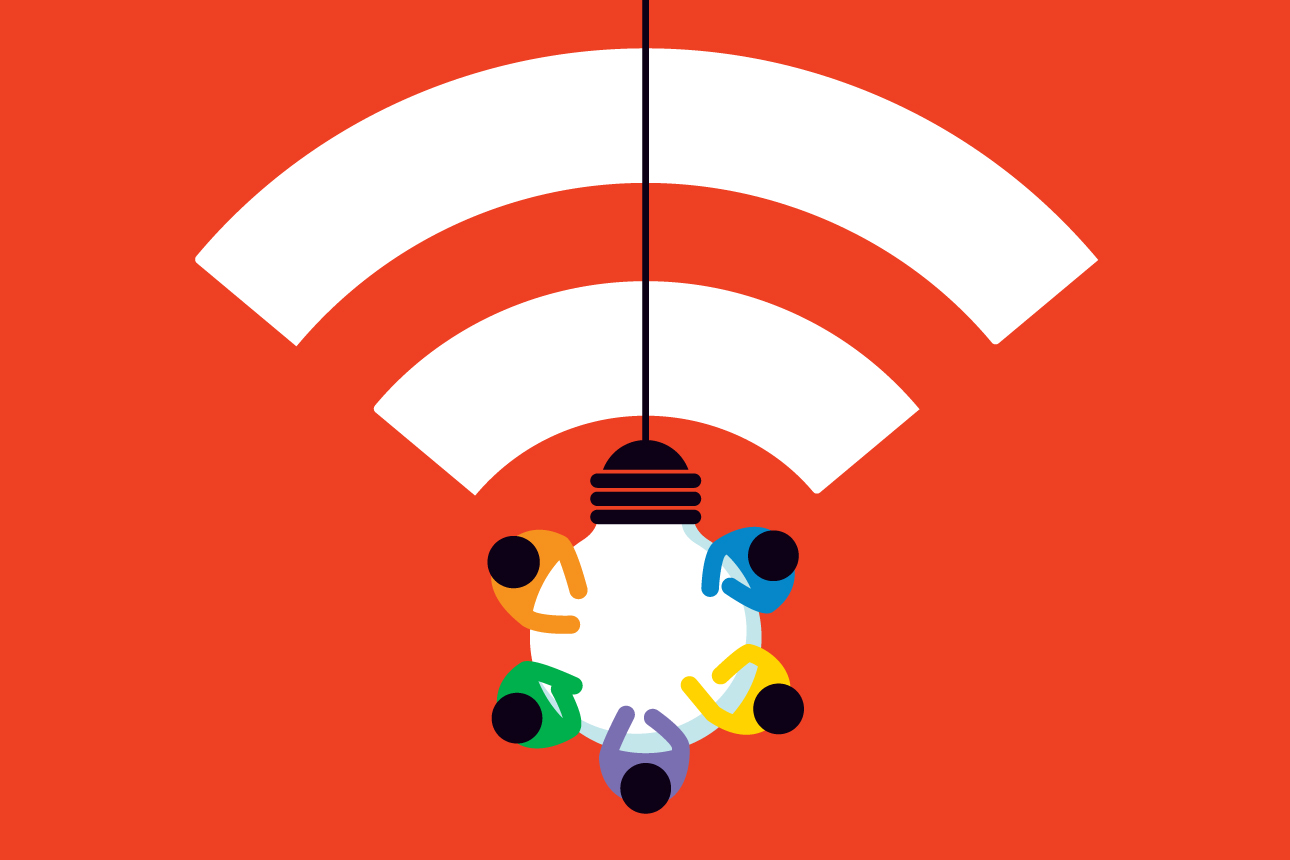The Profound Influence of Small Choices in Digital Collaboration
Simple decisions about how to use collaboration tools can set teams on a path toward either incremental or breakthrough innovations.
Topics

Patrick George
The widespread shift to remote work over the past several years has made digital collaboration tools increasingly essential to employee communication and coordination. Many managers worry that a decrease in face-to-face interactions between employees could be suppressing creativity and innovation, and they are relying on software such as enterprise social media and chat tools to help knowledge workers, in particular, come together. But how do the features of these platforms affect the direction of creative collaboration, and how can managers help teams use them in ways that support the type of collaboration that will be most productive in a given case?
We sought to investigate these questions, focusing on how the use of such tools affected two dynamics that previous research has shown influence the process and outcomes of creative teams and problem-solving: transparency and privacy. Groups working transparently within a larger organization engage with a broader community, including through spontaneous encounters with previously unknown colleagues elsewhere in the organization.1 They develop bridging relationships with diverse individuals and are exposed to fresh perspectives, which may help creativity.2 On the other hand, creative teams that choose to work together privately benefit from a safe space characterized by a sense of trust that fosters authenticity and creative deviance, risk-taking, and idea incubation, which may also help create space for innovation.3 Working in this way fosters bonding ties, cementing a shared identity that may produce stronger motivation to contribute and engage.4
Email Updates on the Future of Work
Monthly research-based updates on what the future of work means for your workplace, teams, and culture.
Please enter a valid email address
Thank you for signing up
Organizational choices between privacy and transparency have played out through changing fashions in physical workplace design.
References
1. P.S. Adler and K.B. Clark, “Behind the Learning Curve: A Sketch of the Learning Process,” Management Science 37, no. 3 (March 1991): 267-281; and L. Argote, P. Ingram, J.M. Levine, et al., “Knowledge Transfer in Organizations: Learning From the Experience of Others,” Organizational Behavior and Human Decision Processes 82, no. 1 (May 2000): 1-8.
2. R.S. Burt, “Structural Holes and Good Ideas,” American Journal of Sociology 110, no. 2 (September 2004): 349-399; and J.E. Perry-Smith, “Social Yet Creative: The Role of Social Relationships in Facilitating Individual Creativity,” Academy of Management Journal 49, no. 1 (February 2006): 85-101.
3. J.P.J. de Jong, M. Mulhuijzen, and K.V. Prasad, “Mining Underground Innovation,” MIT Sloan Management Review 64, no. 3 (spring 2023): 50-55; and E.S. Bernstein, “The Transparency Paradox: A Role for Privacy in Organizational Learning and Operational Control,” Administrative Science Quarterly, 57, no. 2 (June 2012): 181-216.
4. J.S. Coleman, “Social Capital in the Creation of Human Capital,” American Journal of Sociology 94 (1988): S95-S120; R. Reagans and E.W. Zuckerman, “Networks, Diversity, and Productivity: The Social Capital of Corporate R&D Teams,” Organization Science 12, no. 4 (July-August 2001): 502-517; and J. Dyer, N. Furr, C. Lefrandt, et al., “Why Innovation Depends on Intellectual Honesty,” MIT Sloan Management Review 64, no. 3 (spring 2023): 66-72.
5. Y. Kim, S.L. Jarvenpaa, and B. Gu, “External Bridging and Internal Bonding: Unlocking the Generative Resources of Member Time and Attention Spent in Online Communities,” MIS Quarterly 42, no. 1 (March 2018): 265-284.
